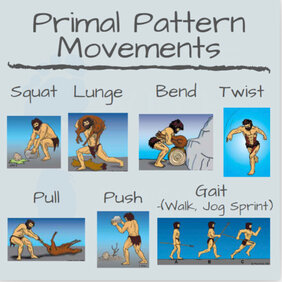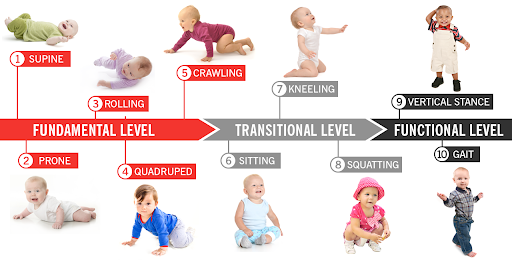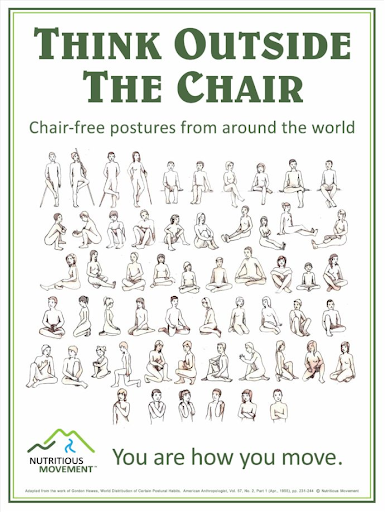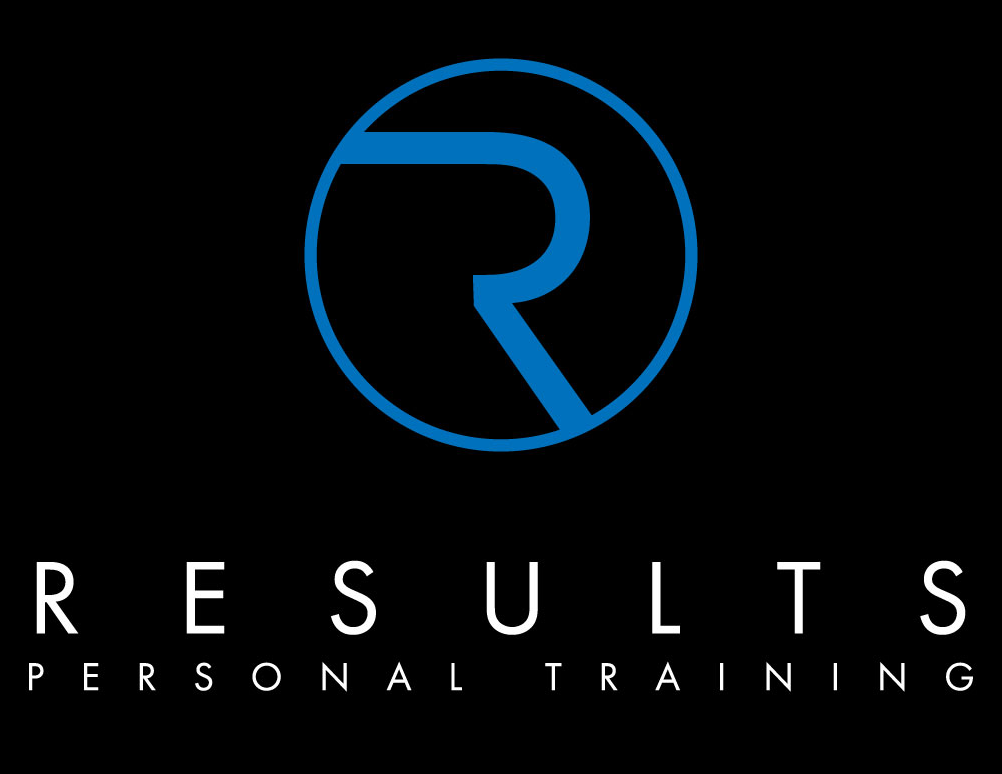
We humans have been around for a long time. And though we have evolved we still have much of our genetic movement blueprint. Our ancestors would squat down and eat around the fire, they would hinge to pick up heavy stones for shelter, lunge to get up and down hills, push and pull the herds of animals, twist to throw spears and locomote to run, swim or climb.
The other thing our ancestors did a lot of was sitting. Research suggests that our ancestors sat as much as 10 hours a day. In recent years, the simple act of sitting has become of major concern. This has driven much scientific research linking high levels of sedentary behaviour with serious health risk. But is sitting itself really the problem? Maybe not.

New research examining the Hadza tribe of Tanzania (one of our last Hunter Gatherer lifestyle tribes left on earth) suggests it’s not sitting but the way we are sitting that’s causing such ill health The Hadza who have very low levels of cardiovascular disease risk, spend the majority of their time sitting on the ground. They squat, kneel, single leg kneel, sit crossed legged and utilise many other ground based positions.
Compare that to modern day man who couches and slouches. The difference may seem small but the higher levels of sustained muscle activity in ground based postures seem to add up in the long run. Sitting on the ground may not only be great for warding off cardiovascular disease. World renowned New Zealand Osteopath and author of Muscles and Meridians Phillip Beach postulates that ground based postures is one way in which the body tunes itself for better movement. To see this play out in everyday life you just have to take a look at a 2 year old. Little Timmy who has perfect posture, squats effortlessly and moves exquisitely. Little Timmy didn’t train as such, he simply spent time on the ground completing his neurodevelopmental patterns.

If you have movement restrictions be it you struggle to get into a deep squat, lunge, hinge, etc then spending time in ground based sitting postures can do wonders to unlock joints, muscles, or the brain’s handbrakes. Being on the ground down-regulates the perception of threat which in turn creates a safer environment. When your brain feels safe it will grant your body more mobility and stability where needed. Struggle to perform a deep squat then spending time in a single leg ground squat may well be the key to unlocking the squat.

Milly performing the regressed version with hand supports and Bear enjoying the single leg ground squat A.K.A The Cowboy Posture.
The Take Home If you don’t use it you’ll lose it. It is well documented that children 12-19 months get up and off the ground over 100 times per day. The average adult is lucky to get off the floor once a day. Our beds are up off the ground, we sit on raised toilets, chairs and sofas. Many of us go to the gym and sit on a spin bike for an hour a day. Before you know it, you’re 80 and you haven’t been down to the ground in 20 years. One fall is all it takes for you to realise that you don’t have the ground strength to get back up. To add to the insult you have lost significant mobility in and around your hips (because you haven’t been exposing them to their full ranges of motion with grounding sitting postures) and this has resulted in a dislocated hip joint.
It doesn’t take a lot. Do yourself a favour and spend at the very least 10 minutes a day working through some ground postures. The beauty of the ground is that it is never static. Your body will soon tell you to move, fidget or simply change position. Get on the ground while you’re typing emails, while you’re watching Netflix, read a book on the floor, have a picnic. Whatever you do, do it on the ground.

Poster credit Katy Bowman ‘’ Move your DNA’’ and many other wonderful books That’s it for today folks. Paul “sitting on my arse” and Krystie “although you were once in tall kneeling position” Miller

Recent Comments